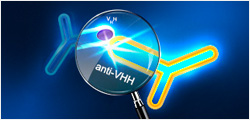| Species |
Human |
| Protein Construction |
Expressed with an N-terminal Met.
IL-17F (Arg31-Gln163)
Accession # Q96PD4 |
|
| Purity |
> 95% as analyzed by SDS-PAGE
> 95% as analyzed by HPLC |
| Endotoxin Level |
< 1 EU/μg of protein by LAL method |
| Biological Activity |
Fully biologically active when compared to standard. The ED50 as determined by inducing IL-6 secretion of murine NIH/3T3 cells is less than 20.0 ng/ml, corresponding to a specific activity of > 5.0 × 104 IU/mg. |
| Expression System |
E. coli |
| Theoretical Molecular Weight |
30.1 kDa |
| Formulation |
Lyophilized from a 0.2 μm filtered solution in PBS, pH 7.2, with trehalose. |
| Reconstitution |
It is recommended that this vial be briefly centrifuged prior to opening to bring the contents to the bottom. Reconstitute the lyophilized powder in 4 mM HCl up to 100 μg/ml. |
| Storage & Stability |
Upon receiving, this product remains stable for up to 6 months at -70°C or -20°C. Upon reconstitution, the product should be stable for up to 1 week at 4°C or up to 3 months at -20°C. Avoid repeated freeze-thaw cycles. |
| Target Background |
Human IL-17F is synthesized as a 153 aa precursor with a 20 aa signal sequence and a 133 aa mature region. Like IL-17A, IL-17F contains one potential site for N-linked glycosylation. IL-17A and IL-17F share 50% aa sequence identity. IL17-F homodimer is produced by an activated subset of CD4+ T cells, termed Th17. IL17-F has been shown to stimulate proliferation and activation of T-cells and PBMCs. IL-17F also regulates cartilage matrix turnover and inhibits angiogenesis. |
| Synonyms |
Interleukin-17F; IL17F |
For laboratory research use only. Direct human use, including taking ora�������lly and injection and clinical use are forbidden.

































